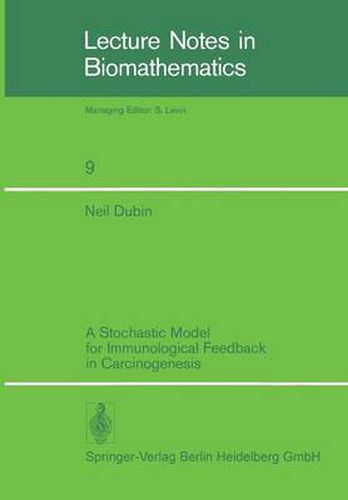Readings Newsletter
Become a Readings Member to make your shopping experience even easier.
Sign in or sign up for free!
You’re not far away from qualifying for FREE standard shipping within Australia
You’ve qualified for FREE standard shipping within Australia
The cart is loading…






This title is printed to order. This book may have been self-published. If so, we cannot guarantee the quality of the content. In the main most books will have gone through the editing process however some may not. We therefore suggest that you be aware of this before ordering this book. If in doubt check either the author or publisher’s details as we are unable to accept any returns unless they are faulty. Please contact us if you have any questions.
Stochastic processes often pose the difficulty that, as soon as a model devi ates from the simplest kinds of assumptions, the differential equations obtained for the density and the generating functions become mathematically formidable. Worse still, one is very often led to equations which have no known solution and don’t yield to standard analytical methods for differential equations. In the model considered here, one for tumor growth with an immunological re sponse from the normal tissue, a nonlinear term in the transition probability for the death of a tumor cell leads to the above-mentioned complications. Despite the mathematical disadvantages of this nonlinearity, we are able to consider a more sophisticated model biologically. Ultimately, in order to achieve a more realistic representation of a complicated phenomenon, it is necessary to examine mechanisms which allow the model to deviate from the more mathematically tractable linear format. Thus far, stochastic models for tumor growth have almost exclusively considered linear transition probabilities.
$9.00 standard shipping within Australia
FREE standard shipping within Australia for orders over $100.00
Express & International shipping calculated at checkout
This title is printed to order. This book may have been self-published. If so, we cannot guarantee the quality of the content. In the main most books will have gone through the editing process however some may not. We therefore suggest that you be aware of this before ordering this book. If in doubt check either the author or publisher’s details as we are unable to accept any returns unless they are faulty. Please contact us if you have any questions.
Stochastic processes often pose the difficulty that, as soon as a model devi ates from the simplest kinds of assumptions, the differential equations obtained for the density and the generating functions become mathematically formidable. Worse still, one is very often led to equations which have no known solution and don’t yield to standard analytical methods for differential equations. In the model considered here, one for tumor growth with an immunological re sponse from the normal tissue, a nonlinear term in the transition probability for the death of a tumor cell leads to the above-mentioned complications. Despite the mathematical disadvantages of this nonlinearity, we are able to consider a more sophisticated model biologically. Ultimately, in order to achieve a more realistic representation of a complicated phenomenon, it is necessary to examine mechanisms which allow the model to deviate from the more mathematically tractable linear format. Thus far, stochastic models for tumor growth have almost exclusively considered linear transition probabilities.